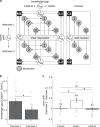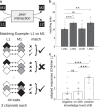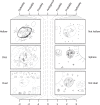Social interaction and conceptual change pave the way away from children's misconceptions about the Earth
- PMID: 31482009
- PMCID: PMC6713729
- DOI: 10.1038/s41539-019-0051-3
Social interaction and conceptual change pave the way away from children's misconceptions about the Earth
Abstract
Throughout development, children undergo moments of abrupt conceptual transitions, often replacing intuitive knowledge with grounded scientific theories. This typically also creates a situation of social conflict, as different children may hold at the same time substantially different theories and explanations about the same phenomenon. The main objective of this work is to understand whether social interaction and exchange of arguments and reasoning may be a catalyzer for conceptual development. Dyads of 7-year-old children with different conceptual understanding of the Earth were asked to reach a consensus about its astronomic and geometric properties. Our results show that mere minutes of deliberation can result in substantial changes in children's conceptual representations, and moreover, that this transition was consistently in the direction of reasoned and scientific opinions. These results provide empirical evidence and suggest specific ways in which peer interaction can be used effectively to promote conceptual change in school settings, in a knowledge domain at the center of this era's post truth and science denial crisis.
Keywords: Cognitive neuroscience; Human behaviour.
Conflict of interest statement
Competing interestsThe authors declare no competing interests.
Figures




Similar articles
-
Children's questions: a mechanism for cognitive development.Monogr Soc Res Child Dev. 2007;72(1):vii-ix, 1-112; discussion 113-26. doi: 10.1111/j.1540-5834.2007.00412.x. Monogr Soc Res Child Dev. 2007. PMID: 17394580
-
How Children's Cognitive Reflection Shapes Their Science Understanding.Front Psychol. 2020 Jun 24;11:1247. doi: 10.3389/fpsyg.2020.01247. eCollection 2020. Front Psychol. 2020. PMID: 32670145 Free PMC article.
-
Embedding Scientific Explanations Into Storybooks Impacts Children's Scientific Discourse and Learning.Front Psychol. 2020 Jun 10;11:1016. doi: 10.3389/fpsyg.2020.01016. eCollection 2020. Front Psychol. 2020. PMID: 32655426 Free PMC article.
-
Domains and naïve theories.Wiley Interdiscip Rev Cogn Sci. 2011 Sep;2(5):490-502. doi: 10.1002/wcs.124. Epub 2010 Nov 17. Wiley Interdiscip Rev Cogn Sci. 2011. PMID: 24187603 Free PMC article. Review.
-
Development of intuitive rules: evaluating the application of the dual-system framework to understanding children's intuitive reasoning.Psychon Bull Rev. 2006 Dec;13(6):935-53. doi: 10.3758/bf03213907. Psychon Bull Rev. 2006. PMID: 17484417 Review.
References
LinkOut - more resources
Full Text Sources

